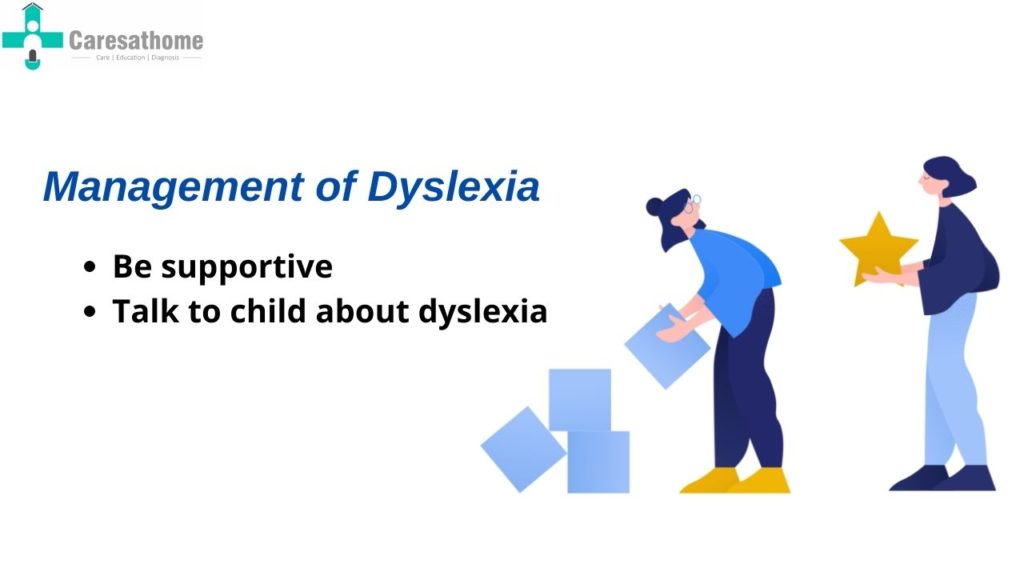Managing Dyslexia: Essential Tips for Parents and Caregivers
Dyslexia is a learning disability that primarily affects reading, writing, and spelling abilities. However, with the right approach and supportive environment, children with dyslexia can thrive both academically and emotionally. It’s important to remember that dyslexia does not reflect a child’s intelligence or potential but simply indicates a different learning style.
The image highlights two key strategies for managing dyslexia: being supportive and talking to your child about their condition. Let’s dive deeper into these essential management tips.
1. Be Supportive
Support is crucial when managing dyslexia. Children with dyslexia often face frustration and low self-esteem due to their struggles with reading and writing. As a parent or caregiver, your emotional support can make a world of difference in how they perceive themselves and their abilities.
- Celebrate Their Strengths: Focus on what your child excels at, whether it’s in sports, art, music, or problem-solving. Celebrating their strengths boosts their confidence and reinforces that they are more than their learning challenges.
- Provide Positive Reinforcement: Encourage your child when they make progress, no matter how small. Positive reinforcement can motivate them to keep trying, even when the learning process feels difficult.
- Work with Educators: Collaborate with your child’s teachers to develop a learning plan that fits their needs. Schools may offer special educational resources or accommodations, such as extra time on tests or access to assistive technology.
2. Talk to Your Child About Dyslexia
Open communication is essential when managing dyslexia. Children might feel confused or discouraged by their struggles, especially if they don’t understand why they are different from their peers. Talking to them about their condition in a reassuring and age-appropriate way can help them accept and embrace their learning style.
- Explain Dyslexia Simply: Help your child understand that dyslexia is just a different way of learning. Explain that their brain processes language in a unique way and that it doesn’t mean they are any less capable or intelligent.
- Normalize the Experience: Let them know that many successful people, like Albert Einstein and Richard Branson, also had dyslexia. This can inspire your child to see their condition as a challenge they can overcome rather than a limitation.
- Reassure Them of Your Support: Make sure your child knows that you are there for them every step of the way. Your encouragement will help them face their learning challenges with resilience and determination.
Additional Tips for Managing Dyslexia
- Use Assistive Technology: There are many tools available that can aid children with dyslexia, such as audiobooks, speech-to-text software, and reading pens. These tools can help reduce the frustration associated with reading and writing.
- Create a Structured Learning Environment: Children with dyslexia often benefit from a routine and structured learning space. Minimize distractions and ensure that their study area is calm and organized.
- Encourage Reading in a Fun Way: Reading doesn’t have to be a chore. Engage your child in reading activities that align with their interests, whether it’s comic books, graphic novels, or interactive e-books. The goal is to foster a love for reading in a way that feels enjoyable and less challenging.
- Be Patient: Progress with dyslexia can take time. Every child learns at their own pace, so patience is key. Celebrate small victories and remain hopeful for their continued growth.
Conclusion
Managing dyslexia requires patience, understanding, and support. By creating a positive and encouraging environment at home and maintaining open communication about their learning challenges, you can help your child succeed academically and emotionally. With the right tools and approach, children with dyslexia can overcome their difficulties and achieve great success in life.
Remember, every child learns differently, and embracing that difference is the first step toward helping them flourish.

